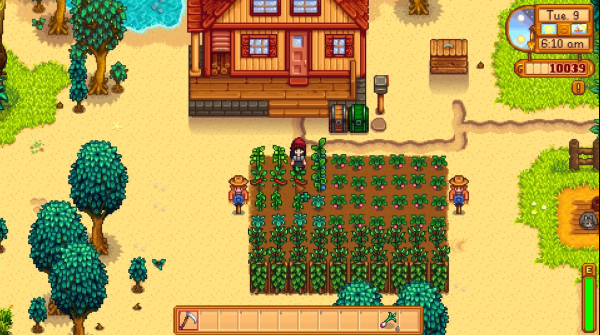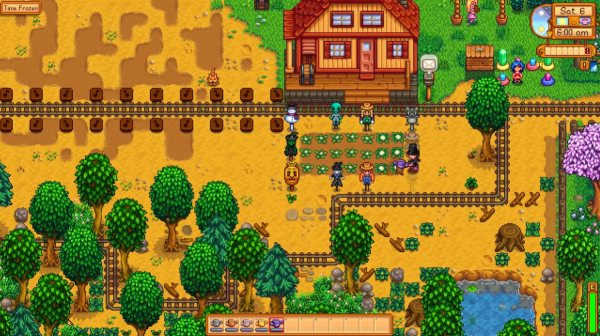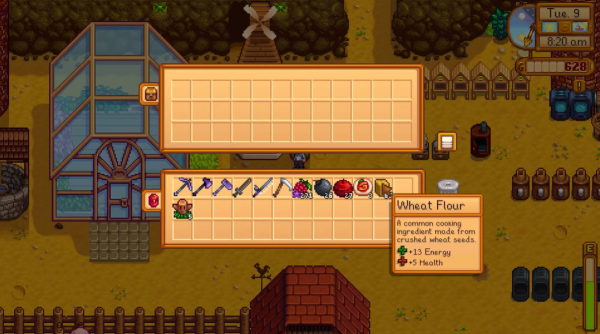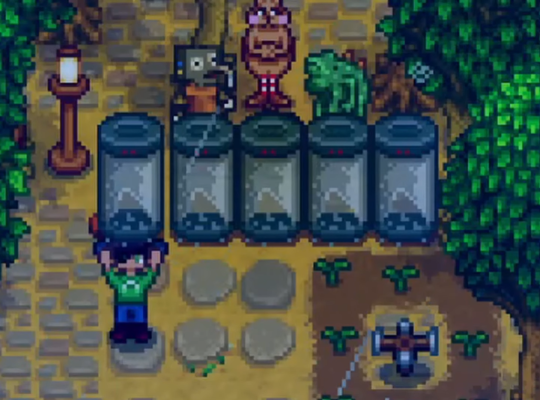In the popular farming simulation game Stardew Valley, players have the opportunity to cultivate a variety of crops, each with its own unique characteristics and uses. One such crop is wheat, a versatile grain that plays a crucial role on the virtual farm.
In this comprehensive guide, we will explore the mechanics of growing wheat, its multiple applications, and tips to maximize its benefits in Stardew Valley.
Information
| Seed | Wheat Seeds |
| XP | 6 Farming XP |
| Energy | Inedible |
| Growth Time | 4 days |
| Season | Summer, Fall |
| Sell Prices (Base) | 25g, 31g (silver), 37g (gold), 50g (iridium) |
| Sell Prices (Tiller +10%) | 27g, 34g (silver), 40g (gold), 55g (iridium) |
| Artisan Sell Prices (Base) | 200g, 250g (silver), 300g (gold), 400g (iridium), 100g (pickles) |
| Artisan Sell Prices (+40%) | 280g, 350g (silver), 420g (gold), 560g (iridium), 140g (pickles) |
Growing Wheat in Stardew Valley: 8 Steps
Step 1: Acquire Wheat Seeds
To begin growing wheat in Stardew Valley, you’ll need to obtain wheat seeds. These can be purchased from Pierre’s General Store for a price of 10g per seed packet.

Step 2: Choose the Right Season
Wheat can be planted during both the summer and fall seasons. Take note of the current in-game season and choose the appropriate time to plant your wheat seeds.
Step 3: Prepare the Farming Area
Select a suitable area on your farm to plant the wheat seeds. Clear any debris or weeds from the chosen plot and use a hoe to till the soil, creating a suitable bed for planting.
Step 4: Plant the Wheat Seeds
With the prepared farming area, it’s time to plant the wheat seeds. Simply interact with the tilled soil and select the wheat seeds from your inventory to sow them. Each seed will be placed in an adjacent tile.
Step 5: Water the Seeds
After planting the wheat seeds, it’s crucial to water them regularly for proper growth. Use your watering can to moisten the soil by interacting with each planted seed.

Step 6: Monitor Growth Stages
Wheat goes through several growth stages before it can be harvested. Keep an eye on the crops’ appearance to gauge their progress. Wheat has five stages of growth, and each stage lasts for one in-game day.
Step 7: Harvesting
Once the wheat has reached its fifth and final growth stage, it’s ready for harvest. You can use either a regular scythe or a golden scythe to harvest the wheat. Remember that there is a 40% chance of obtaining hay when harvesting wheat.
Step 8: Repeat the Process (Optional)
If you wish to continue growing wheat, you can repeat the process by replanting the harvested wheat seeds in a new farming area or the same one. This allows for a continuous supply of wheat on your farm.
Wheat’s Other Uses
In Stardew Valley, wheat is a versatile crop that can be used to craft various items and artisan goods. Here is a list of what you can craft with wheat:
Wheat Flour
Wheat can be processed into wheat flour using a mill. One wheat seed yields one wheat flour. Wheat flour is a common cooking ingredient used in many recipes [1].

Beer
Wheat also has an interesting role in the production of artisan goods in Stardew Valley. By placing wheat in a keg, players can create beer, a popular beverage in the game. Beer can be further aged in casks to enhance its quality and value.
Tailoring and Quests
In addition to its culinary and artisan uses, wheat finds its place in the realm of tailoring. It is used as a material in creating the dyeable Crop Tank Top, a stylish garment that can be customized to suit the player’s taste.
Furthermore, wheat may be randomly requested in summer at the “Help Wanted” board outside Pierre’s General Store, offering rewards of gold and friendship points upon completion.
Gifting

Here is a list of villagers who has a Neutral reaction to Wheat as a gift:
- Abigail
- Alex
- Caroline
- Clint
- Demetrius
- Dwarf
- Elliott
- Emily
- Evelyn
- George
- Gus
- Haley
- Harvey
- Jas
- Jodi
- Kent
- Krobus
- Leah
- Leo
- Lewis
- Linus
- Marnie
- Maru
- Pam
- Penny
- Pierre
- Robin
- Sam
- Sandy
- Sebastian
- Shane
- Vincent
- Willy
- Wizard
Conclusion
Wheat is an indispensable crop in Stardew Valley, offering farmers a myriad of possibilities and benefits. From its growth stages to crafting wheat flour, beer production, and even its role in tailoring and quests, wheat proves to be a versatile resource for players seeking to excel in both farming and artisan endeavors.
By implementing the strategies outlined in this guide, you can maximize the potential of wheat and take your Stardew Valley farming experience to new heights.








